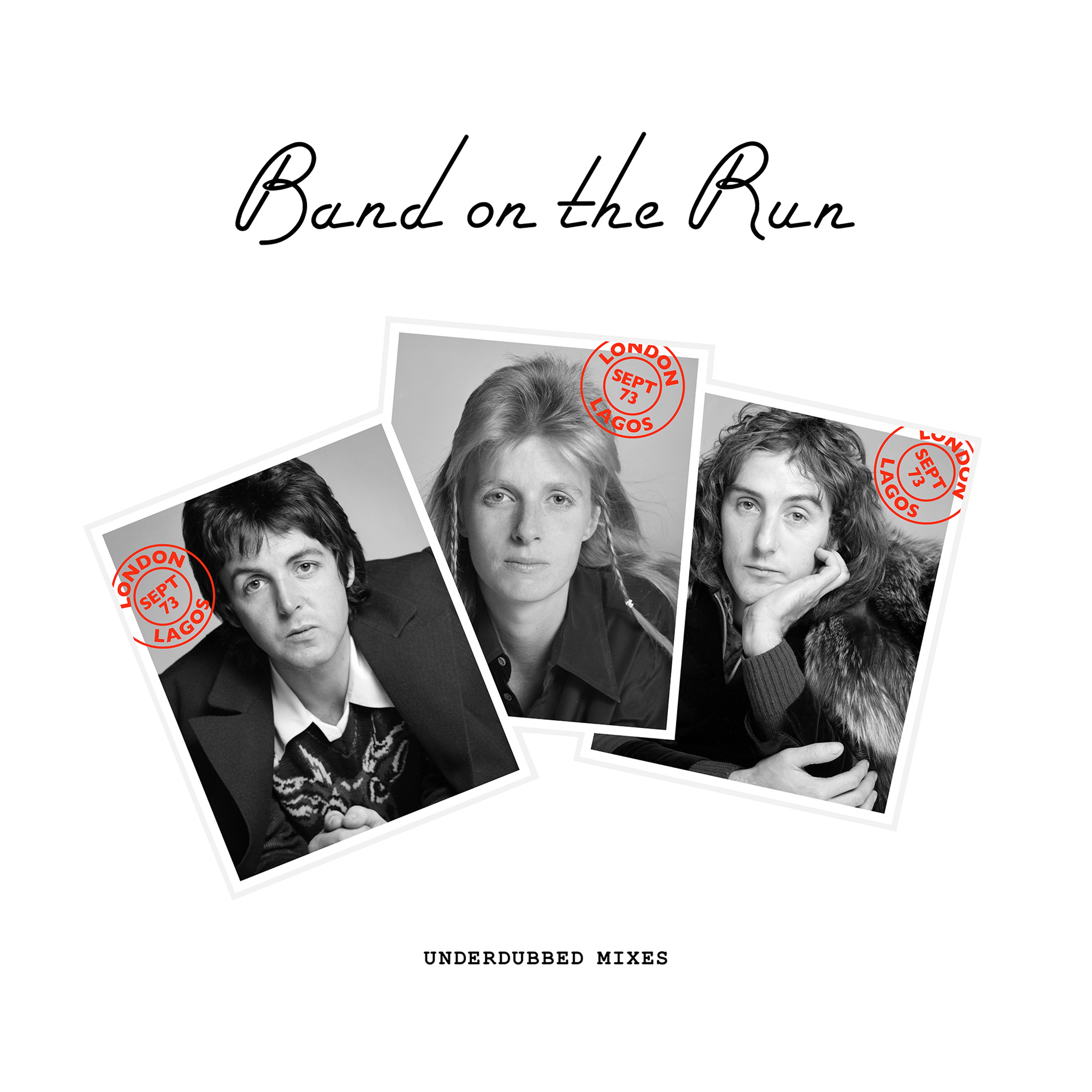Skulle den inte heta ’Strawberry Field Arena’ egentligen?
’Friends Arena’ i Solna byter namn den 12 juli 2024 till ’Strawberry Arena’
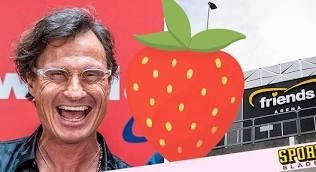
Petter Stordalen – en riktig jordgubbe från Norge.
Den norske hotellmogulen Petter Stordalen har köpt namnrättigheterna till AIK:s hemmaplan och Sveriges nationalarena – som från och med den 12 juli 2024 byter namn från Friends Arena till Strawberry Arena.
Vi tycker dock att namnet Strawberry Field Arena låter mycket bättre! Inte sant?
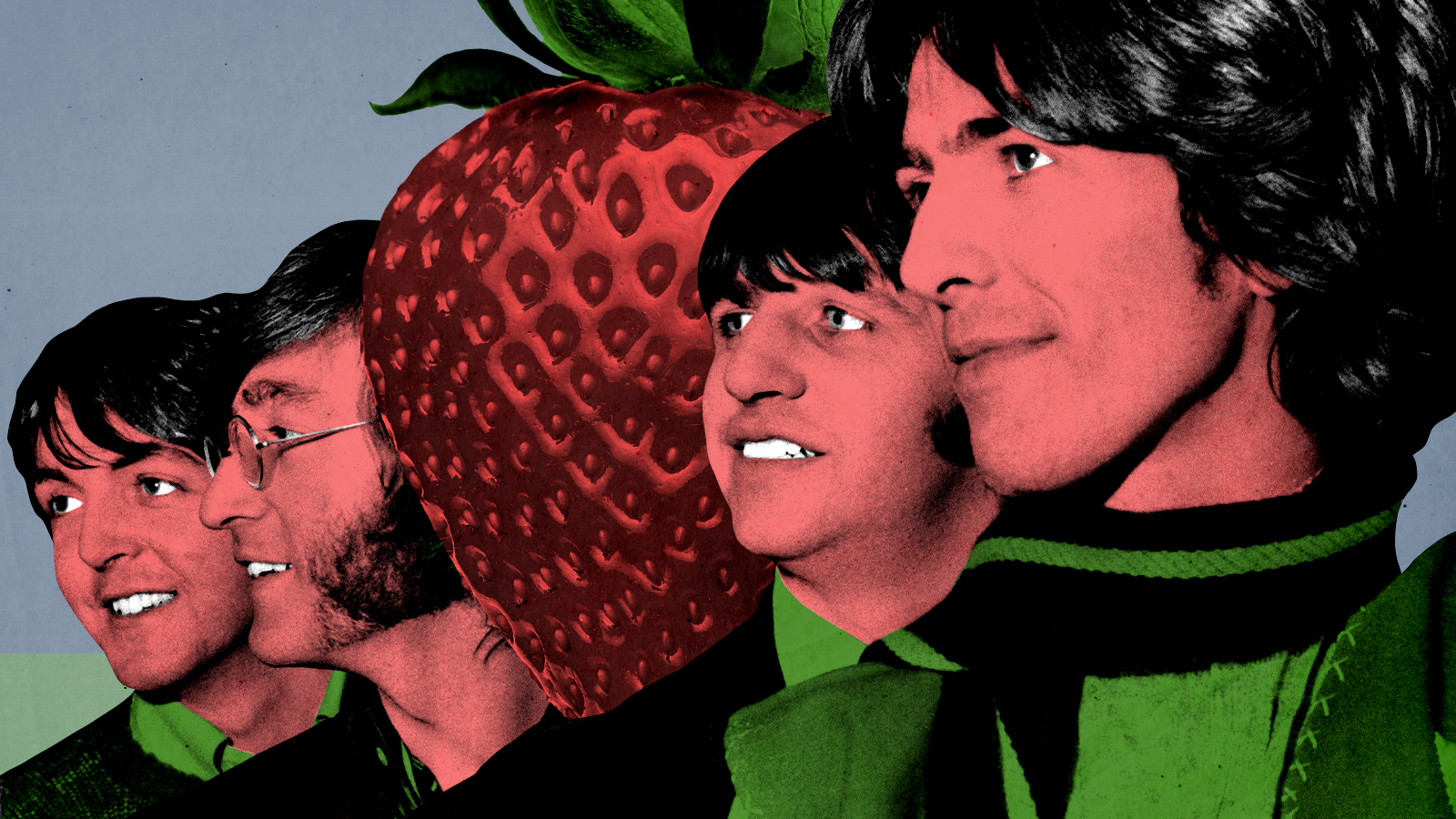
Redan förra året kom beskedet att hans hotellkedja Nordic Choice Hotels byter namn till just Strawberry. Det nya avtalet mellan hotellkedjan och Stockholm Live kommunicerades på lördagskvällen den 13 januari 2024.
Stordalen: Jordgubbsfilosofin har alltid varit närvarande i bolaget och det kommer den att vara även fortsättningsvis. Den handlar om att göra det bästa av situationen och lägga sin tid på det man kan göra någonting åt. Att lägga sin tid på det man inte kan påverka är slöseri med tid och energi. Jordgubbsfilosofin kommer från min pappa Knut som gav mig det rådet när jag som ung jordgubbsförsäljare klagade över att mina jordgubbar var mindre än konkurrenternas och att min försäljningsbod inte var lika fin som de andras. Han sa då ”Sälj de jordgubbar du har för de är de enda du kan sälja”.
Stordalen äger över 200 hotell runtom i Sverige. Kontraktet för namnet på nationalarenan är på tio år, och enligt vissa uppgifter kostade namnköpet norrmannen över 100 miljoner kronor.
Tidigare hade Swedbank köpt namnrättigheten för 153 miljoner kronor för ett kontrakt över tolv år. Swedbank skänkte dock namnrättigheterna till antimobbningsorganisationen Friends. Därav Friends Arena.

Strawberry Arena i Solna som den kommer att se ut från och med den 12 juli 2024.
Arvet efter The Beatles – En podcast med Kevin Howlett
En podcast om arvet efter The Beatles i 2 x 3 delar av Kevin Howlett
Den 20 december 2023 publicerade musikhistorikern Kevin Howlett två podcaster på The Beatles officiella hemsida, som han själv hade producerat och presenterat. Han hade delat upp podcasten i två delar, en som representerade den röda nyutgåvan av The Beatles 1962-1966 respektive den blå nyutgåvan av The Beatles 1967-1970. Var och en av de två delarna är i sin tur indelade i tre kapitel vardera.
Nedan återfinns dessa i form av spellistor på YouTube.
Ken Howlett firar dessa två albums 50-årsjubileum (1973-2023) med dessa två Podcaster, som innehåller intervjuer med John, Paul, George och Ringo, samt många andra musiker och producenter, såsom George Martin och Giles Martin, Dave Grohl och Mark Ronson. Dessutom har han med historien bakom The Beatles sista låt Now And Then.
Först ut är del 1 (1962-1966) med kapitel 1. För att komma åt kapitel 2 och 3, får man klicka på symbolen som återfinns längst upp till höger på bilden nedan. Klickar man på de tre strecken ska man kunna få upp följande kapitelindelning:
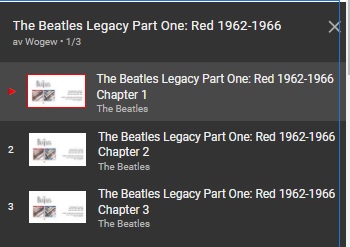
På motsvarande sätt som ovan kommer man åt de tre kapitlen i nedanstående podcast.
Band On The Run firar 50 år
Albumet ’Band On The Run’ med Paul McCartney & Wings fyller 50!

Albumet släpptes den 30 november 1973 i UK och den 5 december samma år i USA. Inspelningarna gjordes dels i EMI and ARC i Lagos, Nigeria, Afrika, dels i AIR and Kingsway Recorders i London under oktober-november 1973.
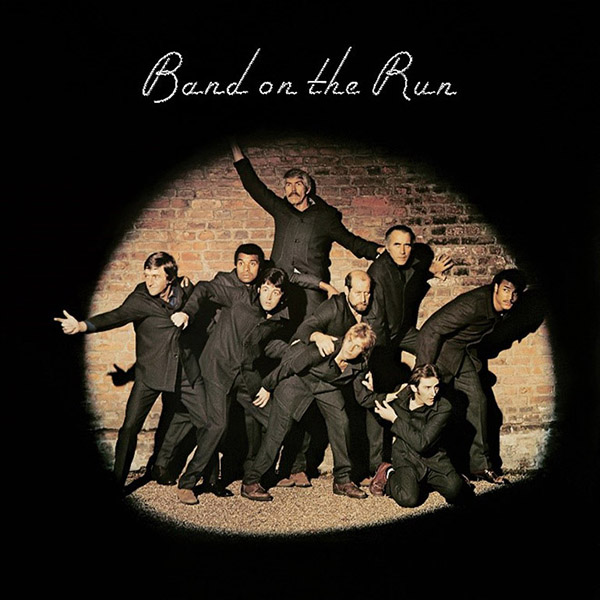
The 50th Anniversary Edition släpps den 2 februari 2024.
Som vanligt när det gäller Paul McCartney, kommer denna jubileumsutgåva att ges ut i ett otal antal varierande format:
- Ett album i half-speed mastered vinyl, vilken innehåller bonusspåret Helen Wheels som var med på den amerikanska utgåvan, men ej på den engelska 1973.
- Ett dubbelalbum i vinyl, som innehåller originalutgåvan i USA 1973, remastrad i halvfart samt ett album med titeln Underdubbed Mixes Edition i en så kallat glidfodral. Utgåvan innehåller också två polaroidposters tagna av Linda McCartney.
- En dubbel-CD innehållande originalutgåvan i USA 1973, Undubbed mixningar samt en dubbelsidig utvecklingsbar Polaroidposter tagen av Linda McCartney.
- Band On The Run (Underdubbed) blir också tillgänglig att köpa för nedladdning på olika digitala plattformar.
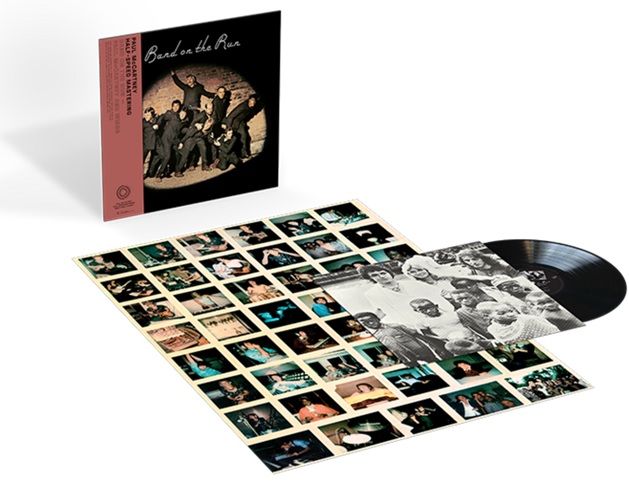
Utgåva nr 1 ovan, enkelalbumet.
Innehållet på enkelalbumet:
1 LP half-speed-mastered edition (MPL/UMe)
1. Band on the Run
2. Jet
3. Bluebird
4. Mrs. Vandebilt
5. Let Me Roll It
6. Mamunia
7. No Words
8. Helen Wheels
9. Picasso’s Last Words (Drink to Me)
10. Nineteen Hundred and Eighty Five
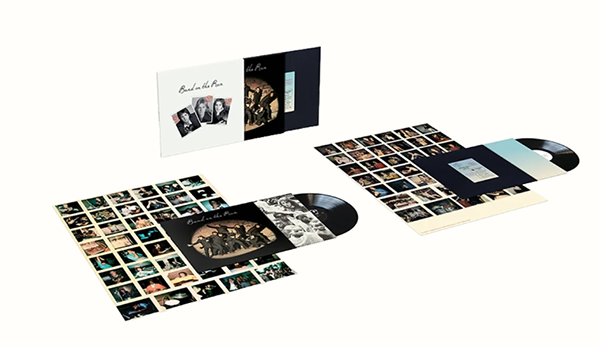
Utgåva nr 2 ovan, dubbelalbumet.
Innehållet på dubbelalbumet:
Disc 1 – Band on the Run
Side A
1. Band On The Run
2. Jet
3. Bluebird
4. Mrs. Vandebilt
5. Let Me Roll It
Side B
1. Mamunia
2. No Words
3. Helen Wheels
4. Picasso’s Last Words (Drink To Me)
5. Nineteen Hundred And Eighty Five
Disc 2 – Band on the Run (Underdubbed Mixes)
Side C
1. Band On The Run
2. Mamunia
3. No Words
4. Jet
5. Bluebird
Side D
1. Mrs. Vandebilt
2. Nineteen Hundred And Eighty Five
3. Picasso’s Last Words (Drink To Me)
4. Let Me Roll It
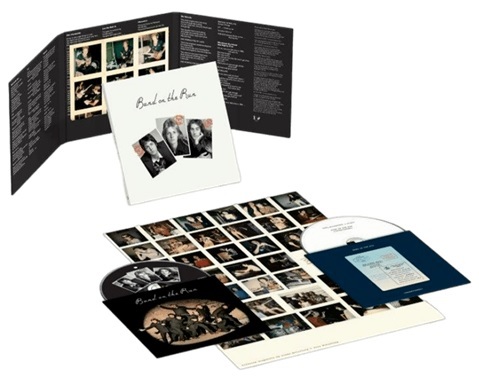
Utgåva nr 3 ovan, dubbel-cd:n.
Innehållet på dubbel-cd:n:
Samma som på dubbelalbumet ovan.
Om 50-årsutgåvan säger Paul McCartney bland annat:
This is Band on the Run in a way you’ve never heard before. When you are making a song and putting on additional parts, like an extra guitar, that’s an overdub. Well, this version of the album is the opposite, underdubbed.

.
2023 det gick alltför fort, här kommer ett sista ’nyårs’-kort
Inför nyårsfirandet 2023/2024 använder vi oss av Apples neutrala säsongshälsning
Nu när julhelgen har passerat vill vi i styrelsen för The Beatles Information Center skicka en neutral nyårshälsning till alla våra medlemmar och tacka för ett fantastiskt jubileumsår!
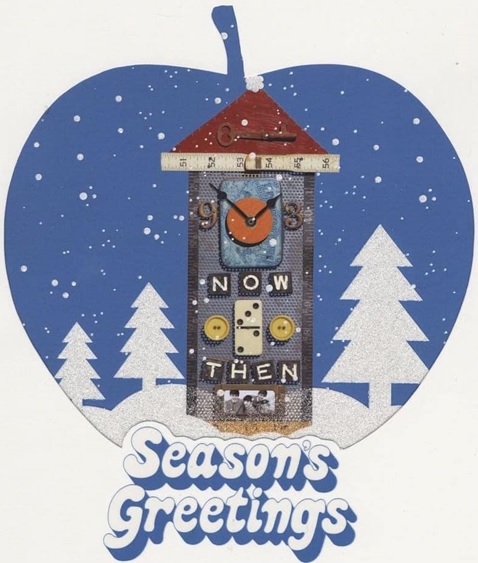
Vi får räkna med att 2024 kommer att bli ännu ett fullspäckat Beatlesår. Historien om The Beatles är ju lika med The Never Ending Story!
Här är några tips på vad som vi kan förvänta oss under 2024:
Nyutgåva av Paul McCartney & Wings album Band On The Run som firar 50 år (1973-2023) och som släpps i början av februari 2024.
Nyutgåva av Paul McCartneys album McCartney III, som firar 3-årsjubileum i slutet av december 2023. Släpps förmodligen i början av januari 2024.
Ny samlingsutgåva av John Lennons Mind Games, som firar 50 år (1973-2023), släpps i juni 2024.
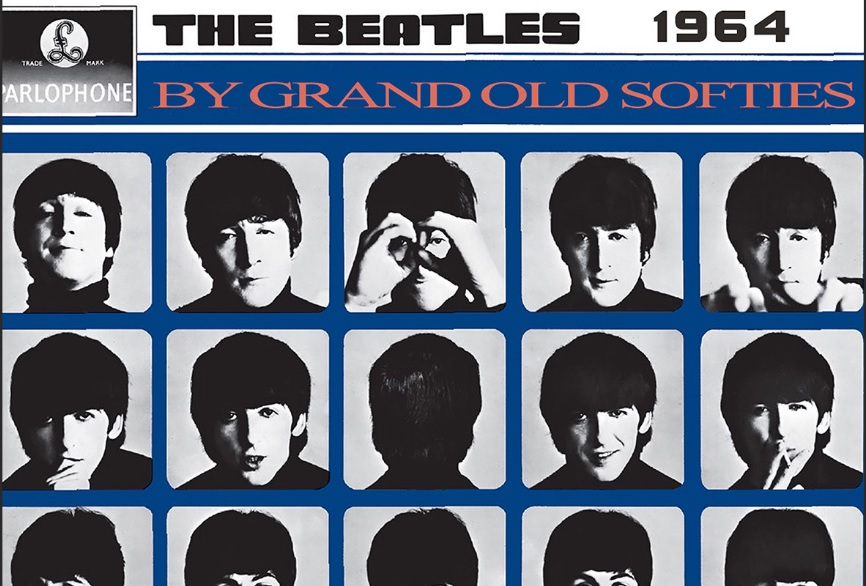
THE BEATLES 1964 BY GRAND OLD SOFTIES
Onsdagen den 14 augusti 2024 spelar Grand Old Softies upp godbitarna från The Beatles repertoar 1964 på Ekermanska Malmgården/Folkparken.
Torsdagen den 15 augusti 2024 spelar man högre upp i luften. Då besöker Grand Old Softies Svampen i Örebro – 58 meter upp i luften – med sin föreställning The Beatles 1964.
Diverse mer eller mindre kvalificerade gissningar, varav kanske någon slår in?:
Paul McCartneys Archive Collection-utgåvor av London Town och/eller Back To The Egg.
The Beatles nymixningar av albumen Rubber Soul och/eller Help!

Intervju med Giles Martin om The Beatles senaste utgåvor
Giles Martin i en intervju i underhållningstidningen Variety
Variety publicerade rätt nyligen en intervju med Giles Martin om han arbete med såväl The Beatles sista singel Now And Then som gruppens nymixade utgåvor av de två dubbelalbumen The Beatles 1962-1966 respektive The Beatles 1967-1970.

Giles Martin i Abbey Road Studios. Foto: Alex Lake.
Här är större delen av intervjun i original på engelska:
Vi inleder med intressanta fakta kring hur Now And Then blev till:
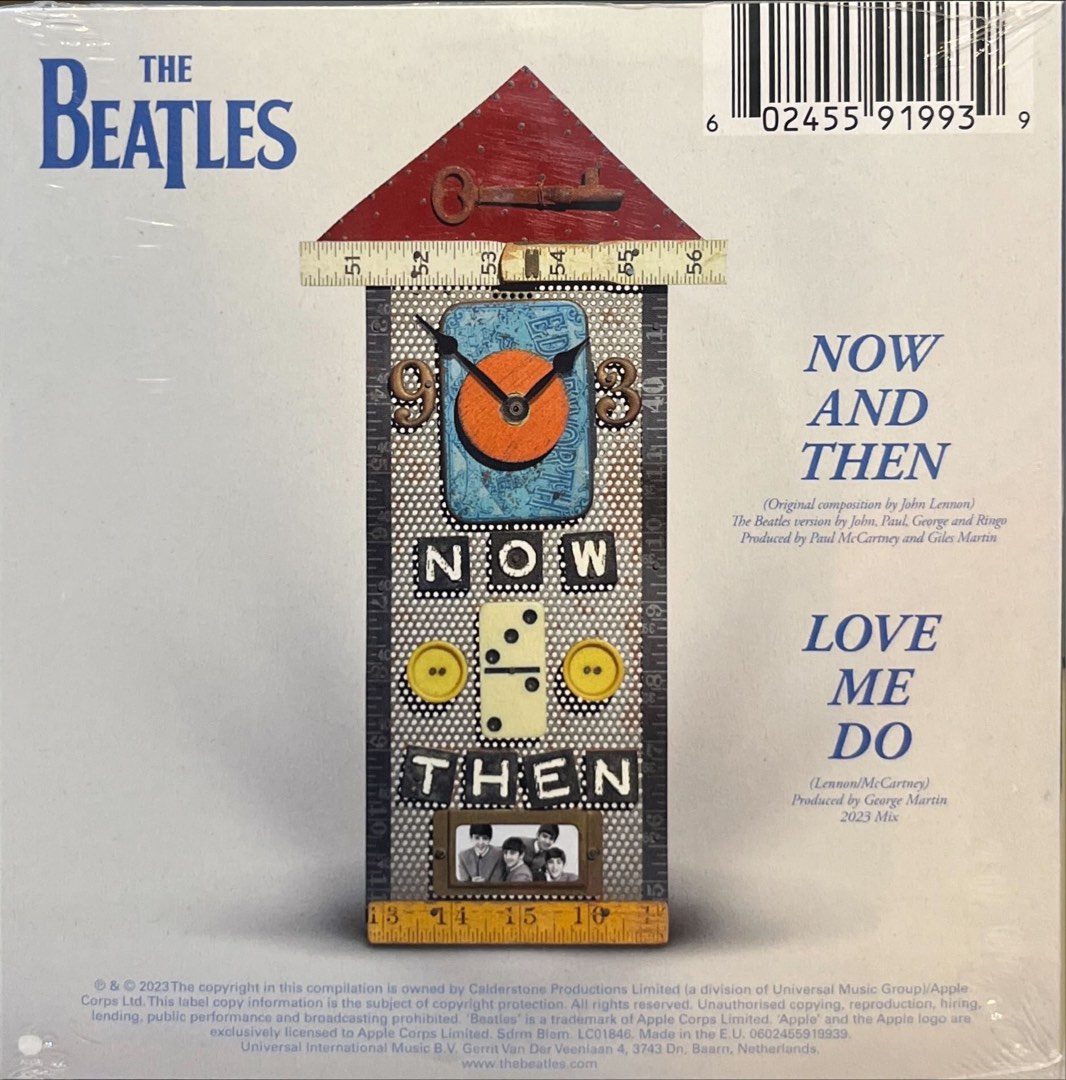
After all you’ve done with the Beatles’ catalog over so many years in the realm of compiling and remixing, did it feel like any kind of heavier weight to you that you were actually going to have your name on a Beatles track — the final new one — as a producer?
Yes, it did, in a way. At the same time, you can’t be (overindulge) this thought process, because otherwise you’d end up just being too nervous to make decisions. You’d end up thinking, “I can’t do this. I can’t do that.” It’s making a speech, where if suddenly you’re thinking about what you’re going to say every time you open your mouth, whatever comes out of your mouth is going to be terrible. But then by the time you start working on the song, you end up thinking, OK, how do we do the best job we can? And this is very much Paul and Ringo, this isn’t just me. Paul brought the project to me, and kind of worked on the most of the song before I even got to it. So I had the protection of a very good maestro. My fall wasn’t going to be huge because I had Paul to catch me, or disagree with me if I got things wrong.
The orchestral scoring session you and Paul did at Capitol Studios in L.A. took place quite a while ago, we know. There’s such a thing as NDAs, but it’s still surprising that that many people could be involved and keep a secret, until Paul himself first spoke about it this spring.
Well, the orchestra didn’t know what they were playing on. They weren’t aware that this was a Beatles recording. I think they thought it was just a Paul McCartney project that I was working with him on. It’s one of those things that I didn’t really think about at the time. I’m thinking about the string arrangement, the players playing the right thing, all that stuff. But they weren’t privy to the information, so they had nothing to hide. A little knowledge is a dangerous thing. Not in this case: A little knowledge actually worked quite well. But it is funny how we finished this last year, and it hasn’t got out.
Speaking of the orchestral part, why did it feel important to do an orchestral part, in the ultimate expansion of John’s demo? Of course great orchestral parts are a big part of your lineage.
Paul came and played me the track he’d been working on, and I said, “Maybe we should add some strings to it.” He was like, “Well, yeah, we should try it, but I don’t want to make it too corny.” Also, I think he was nervous about us collaborating away from the other Beatles, funnily enough. How much do you add without them? I just said to him, “Why don’t we do something, and then we can always delete it? No one will know.” There’s no teams that hear stuff. It was just me and Paul, at that stage — and Ringo, obviously, and then Sean and Yoko and Olivia. It’s a very small network, so therefore you have that freedom to try things.
With the strings, I thought I might as well rip off my dad — which I did do. My dad was an amazing string arranger. If I’m gonna rip off my dad, you might as well do it for the last Beatles song. There were some times where Paul was like, “We shouldn’t do that, you’re going a bit too far, or “We should try and do this.” Because, even with my dad, even with “Yesterday,” the first string thing (with the Beatles), Paul would have very, very strong ideas about how you want things to sound. And generally, obviously, it’s the Beatles — he’s right. I’m pleased we added the strings. I just wanted it to be as Beatles as possible, basically. I wanted people to listen to this and go, “Yeah, this is a Beatles record.”
The songwriting didn’t seem quite complete in the demo John did that many people have heard. They would say it starts off strong and then loses something along the way. Compositonally, was it Paul’s job to bring it across the finish line?
Completely Paul’s job, as it should be. He wanted to finish this track, and his collaboration with John is, let’s face it, the most successful songwriting collaboration of all time. … What’s interesting is: Someone said, “Paul didn’t really write a middle-eight to it.” And I said, well, he put the guitar solo in [where a bridge might go] as a tribute to George, really. There’s no point in Paul writing a middle section just for the sake of it, so he could write a middle section, which he could have done easily. So that was purely down to him.
More than something of George’s. George was playing acoustic and electric guitar on it. What was really interesting is what Paul would say to me [in the process of] doing the strings and then going through the arrangement. The strings are quite rhythmical, as you heard, the sort of chuggy “Eleanor Rigby” style kind of strings I’ve got in there. And Paul was very deliberate in saying to me, “Listen carefully — isolate George. Play it to me. We need to make sure that we are empathetic to the rhythm that George is trying to lay down here.” Because that’s what he was good at. That’s what I learned from Paul. You know, (George is) not here to say he doesn’t like the string arrangement. So let’s make damn sure that we respect his rhythm playing on the electric guitar when he’s playing it.
As far as placing Paul’s vocal in there, was there much conversation about how prominently to feature him versus John, and in which parts?
No, it’s just what feels right, really. You know, I’ve been answering questions recently on ethical choices behind mixing. It’s like, there’s enough ethical problems in the world without really thinking about doing them while you’re mixing, right now! And so, no, honestly, one just does what feels the right thing to do as far as vocal balance goes. It’s not like, “OK, Paul needs to be louder, John needs to be quieter on this bit.” It’s just like, what sounds right for the song, which is exactly how it should be. You know, people shouldn’t listen to technology, and they shouldn’t listen to the thought process. They should listen to the song. It’s the same thing we talk about when we do the (catalog remixes). It’s not like I want someone to go and re-listen to a mix. A lot of people do — but I want people to listen to the song.
It obviously struck you right, though, Paul’s idea to have a George-like slide guitar solo as the ultimate tribute, instead of a middle-eight, and that it would be right for the song as well, as have this emotional resonance for people.
I mean, if it was Paul answering… I’d do some stuff where Paul was like, “You shouldn’t be just doing it because it’s a Beatles track.” I think obviously in the style of the solo, Paul is giving a nod to George. But I think the solo’s there because it’s the right thing for the song, and not because George needs a tribute. Otherwise it would just be a bit corny. And I don’t think it is; I think it lifts it.
We recorded the string section in Capitol Studios, and I worked with a guy called Ben Foster, who Paul and I have worked with for a long time, a conductor-arranger. We got in quite a big string section, a much bigger string section than Beatles would normally have had. And I did pretty much realize, even though it seemed like a waste of money — and I know my dad would roll over in his grave… On the bulk of the song, we didn’t use all the strings, because it sounded too posh to be Beatles. It sounded too schmaltzy. But then you get to the (slide guitar) solo section, and I switched to using the full string section for that bit, because it sounds to me a bit like “Golden Slumbers.” You know, if you’re gonna refer to the Beatles in a song, do it on a Beatles song. But the Beatles themselves — my dad always said it — never liked to do the same thing. They never liked to refer to themselves in their own work.
I don’t think so. It’s so key for a project like this that you have John being John. And in the song itself, it sounds like John singing, and it is John singing, and then you can make the track sound good, and like the Beatles… I think that’s why George reacted (dismissively) when they were doing it all those years ago. It’s not because he didn’t like the song, because the song is good; it’s because it sounded crap with the vocal on it. Honestly, you’ve got to have the right material, and we wouldn’t have had the right material without the technology.
Nu går intervjun över till remixningarna av The Beatles båda dubbelalbum från 1973:

Speaking of that technology, let’s talk about how you put it to use on the “1962-66” and “1967-70” remixes, of which there are dozens of new versions you worked on. When we were last talking when the deluxe “Revolver” was coming out, you spoke about you said the technology was finally ready to go back and address the problems of remixing the band’s earliest material, with its strange stereo separations and everything being melded together onto a couple of tracks. Obviously, it was ready, we now see from how far you delved into their very earliest recordings for these two sets. Was that a joy for you, to be able to have the technology you needed to create real stereo mixes — and Atmos mixes? It almost sounds comical in a way, that there is an Atmos mix of something as basic as “Love Me Do,” if we’re just thinking about the stereotypical use of Atmos. But you obviously embraced doing it all.
You know what? I did. And I have to say that I think the Atmos mixes of these songs, or just the new stereos, are probably the most groundbreaking things that I’ve been involved with of the Beatles. I mean, I really do. I was surprised. And as you know, I do embrace this technological side. What’s great about the opportunities that I get is that I can apply new technology that we’re inventing to an old catalog that deserves it, and that has a tradition of breaking new ground and breaking new boundaries.
And when we like looked at “Twist and Shout” or “Please Please Me” or “Love Me Do” and these (earliest recordings), I didn’t think it was possible to get the results we’d get. What’s exciting to me is, the results we’ve got are the sound of the band in the studios, you know? It’s almost taking away the technology that was limiting them at the time, in order to create a mix where the band are in the room. We can now separate the drums, bass and guitar without any transients or anything being added. There’s no sort of AI creation of instruments. And then we can put (the Beatles) back into the studios, which we do, and then we can amp them and then we can make the records.
People weren’t expecting the Red and Blue collections necessarily to come out at this time. They — we — thought it might be a deluxe “Rubber Soul” next, working backward from what you last did with “Revolver.” And sometimes people disparage hits collections. But I just know from my personal experience, when those albums came out in 1973 when I was a kid, I so immersed myself in them it was like a religious conversion, to the Beatles.
Yeah — for me, too. I think we’re that of generation. There’s certain generations where it’s like, “the Red and Blue albums, what are they?” And then there’s generations going, “Yeah, I know every song in the track listing on the Red and Blue albums.” There was a lot of thought behind the process of doing this, like obviously there’s going to be. But the conversations were, in essence, about this: the interesting thing about the Beatles’ catalog is that the tracks that are listened to by the new generations now aren’t necessarily the tracks that are on the No. 1s album (“1s,” a compilaton that came out in 2000), for example. The most streamed track is “Here Comes the Sun,” and that’s not on the No. 1s. So in a way, this compilation has a relevance to it (for younger people). But also, as stand-alone albums for people like you and me, us crusty blokes, who are of that generation… I mean, not to say you’re crusty, but, you know…
I’m good with “crusty.”
Well, you are crusty. I’ve known you for long enough to tell you you’re crusty. But the thing is, they (the Red and Blue compilations) are out there— they’re albums we know. It’s so weird that there are certain compilation albums that exist on their own (as iconic). Whether it’s the Eagles’ “Greatest Hits” or Queen “Volume 1,” there are certain albums that are identifiable, even though they’re greatest hits albums, as albums in their own right, and I think the Beatles’ Red and Blue are from that ilk.
With the tracks that were added for both “1962-66” and “1967-70,” whoever made those decisions, they’re interesting decisions. It’s not entirely just the biggest hits that weren’t on the original 1973 LPs. Also, on vinyl, it’s interesting that there is a sequence that’s adheres to the original vinyl sides, and puts all the added songs on additional discs, whereas the CD and digital versions place everything in chronological order — the original and newly added tracks.
Well, with the added tracks, where they come from, the original thought process was: “OK, how do we respect and honor what people listen to these days?” And a lot of the tracks you have as the added tracks are tracks that are really popular now, for whatever reason. But we sort of changed tack on that a little bit in the creation process. We were like: “Well, you can’t make a playlist” (of just the most-consumed songs). Do you know what I mean? That’s the world we’re in, but that doesn’t make any sense. It’s not very Beatles, as well. Even nowadays, we’re meant to be leading, as opposed to just going, “We looked at the (most played songs) and these are the greatest hits in the playlist.” It wouldn’t be very Beatles. So we ended up in the Red and Blue [instead of starting from scratch with an all-new, data-driven track list].
Intervjun tar här ett skutt tillbaka till Now And Then:

Let’s go back quickly to “Now and Then” for a moment. There is a backing group vocal track that was announced that people are wondering about. In the pre-release materials, it was compared to an outgrowth of something you did for the Las Vegas “Love” soundtrack, where you were able to use backing vocals done for one song on another track. But with what you did here with backing vocals, is there a way in which that counts as AI — the bogeyman that people bring up now? Or how would you describe it?
No, it’s not artificial or intelligent. No, it’s the same process that I used, as you say so rightly, in “Love.” And Paul was nervous about this, actually… My thought was this: that I really thought this needs to sound like the Beatles. And I have Paul, and he’s definitely the producer of this track, and I’m producing it with him. The band would have probably sang “ahhhhs” in those things, but they’re not around anymore. So I’m not using AI to recreate their voices in any way. I’m literally taking the multitrack tapes of “Eleanor Rigby,” some stuff from “Because” and “Here, There, and Everywhere,” just in the same way the Beatles are splicing that in.
So, no AI, no. It might have been easier if I used AI, but I didn’t. And it’s funny, because it gives a different quality. I was listening to the song today, and the backing vocals have a sort of tape feel to them, like they’re on tape. They feel like they’re from the Beatles, and they are from the Beatles. I think if they were from some machine learning program, they wouldn’t sound right.
Finally, just imagining what your dad would think about you being the producer on an actual Beatles track, as opposed to all the other functions you’ve had over the years, do you think that would surprise him or delight him, and do you have any kind of emotion around that?
[He pauses.] You’re the first person who’s asked me that question, actually… You know, I was incredibly close to my dad, and we had a long conversation when he was dying. He was immensely proud of me and what I did. And I know that sounds so arrogant, because I was always worried about trying to impress him.
I think he’d be delighted. And actually, we worked together on a thing similar to this, with a song called “Grow Old With Me,” where we didn’t have the same technology, obviously, because it was a long time ago. My dad had a string arrangement, I kind of produced it, and it was for John Lennon. But it was from the same cassette recording that John had… that Yoko had. So I did actually do this. And I always feel as though I have his hand on my shoulder when I’m working on this material. I always try and honor him as well as trying to honor the Beatles when I’m doing this, because they had a unique collaboration, which I can’t compete with in any way, obviously. But I can try and do the best I can with the abilities I have.
Paul’s trust in you is something that’s been not handed down exactly, but earned, over the course of everything you’ve done. That has got to be a great, great feeling, when he comes to you repeatedly, and now especially on “Now and Then,” and says, “Work with me on this.”
Yeah, and I love him. I’ve known him all my life, and he’s always been consistently kind to me, Paul. He knows I love him. And he knows that I don’t do this so I can go to the cocktail bar and tell people I’m doing it. I do this because I want it to be good, and there’s a sense of protection within it. But I’m consistently surprised by and don’t take for granted his trust. It’s funny, when someone trusts you, it does add pressure.
I did the “Rocketman” film, and they were going to do a playback of where we were with it, and Elton goes, “I don’t need to hear anything. I trust Giles completely. I’ll come watch the film when we’re at the premiere.” And you go, “Oh my God, that’s amazing” — and at the same time, “I’m going to screw it up, your trusting me with this.” It does give you confidence. At the same time it’s like being a kid, when they go, “You can look after the house.” You’re going, “Oh, I’m going to burn it down.”
We always want to ask you what’s next in rolling out Beatles stuff, and you never want to say or commit to what’s next. But is it safe to assume that if people now have fully half the tracks from “Rubber Soul” remixed for the new “1962-66,” that eventually they’ll get the remixes of the other half, and in fact all the tracks from the early albums everybody wants, at some point?
All I can say is that I’m definitely not doing it right now. I mean, as you know, the answer to that question will be the same. It’s that we’ve just done this, and… With Peter’s video, and the sensitivity around the project, I’m really proud of what we’ve done. I think it is emotional. And I think we have to let the dust settle on this first before we make any decisions about what we’re going to do next — that is my final answer on that. As you’d expect!
There is a lot of emotion associated with this, for you, and obviously for everybody involved, and there’s going to be a lot of emotions experienced by fans in the coming couple of weeks. It’ll be an interesting season for people not just to reconnect with the Beatles, but reconnect with times in their lives they associate with these songs, and experience them in a more vivid way, in some ways, with these catalog remixes. And that is even apart from “Now and Then,” which is going to be very touching for people.
You know, we live in such a shitty time right now, in all honesty. And it’s quite nice to think about something else. That’s what music should be there for.
You know, I was with my daughter in the car the other day, and she’s 16, and she goes, “You know, Dad, literally, recently, I’ve really been getting into music. I really love music.” I was like, well, that’s interesting! And what she meant is that “I’m suddenly hearing things, and listening.” And it’s not obligatory — you don’t have to do that. Some of the greatest music ever is what you put on when you’re not thinking, or you’re with a loved one. But I hope this resonates with people, because it comes from the right place.
It’s not some sort of cynical marketing exercise to try and push catalog sales. I love the fact that it’s Paul just having the cassette in his possession and… I think he just misses John and he wants to work on a song with him. It’s just as simple as that.

Till alla våra Beatlesvänner – En God Jul & Ett Gott Nytt Beatlesår 2024
En önskan – till framför allt våra Beatlesmedlemmar – om en God Jul och Ett Gott Nytt Beatlesår 2024.
Det är mycket på gång kring The Beatles vad gäller såväl böcker, skivor, filmer med mera. Vi får se vad vi kan få plats med i vårt vårnummer av Beatles Nytt.
Men redan nu bjuder vi på en Beatleskaramell i form av ett 60-årsjubileum för The Beatles skivor från 1964. För den musikaliska karamellen står föreningens husband
Grand Old Softies!
Tillställningen äger rum på den Ekermanska Malmgården på Södermalm i Stockholm onsdagen den 14 augusti 2024!
Entrén öppnar 14 aug kl. 17:00 och livemusiken börjar ljuda kl 19.30. Representanter och represenfarbröder från The Beatles Information Center kommer att vara på plats för att fira den odödliga musiken.
Arrangör: Porter & Thorells
The Beatles 1964 by Grand Old Softies
1964! A HARD DAY’S NIGHT! BEATLES FOR SALE! BEATLES I SVERIGE! I FEEL FINE!
The Grand Old Softies (G.O.S) hyllar traditionsenligt The Beatles. Denna gång genom att spela alla sina favoriter från 1964 live på Ekermanska Malmgården.
I Feel Fine, Can’t Buy Me Love, I’m A Loser, No Reply, Things We Said Today och många, många fler godbitar från 1964. Och låtarna är minst lika bra fortfarande!
Vi samarbetar som vanligt med ärevördiga organisationen The Beatles Information Center som under kvällen kommer berätta några favorithistorier från när The Beatles var i Sverige och om sitt 50-årsjubilerande.
Grand Old Softies har hyllat Beatles live sedan 2006 då 40-årsfirande Revolver framfördes i sin helhet. Grand Old Softies har under åren gästats av artister som Plura, Magnus Carlson (Weeping Willows), Frida Öhrn och Mascots.
Skriv redan nu in datumet den 14 augusti 2024 i din Beatlesalmanacka!
Biljetter köpes genom Tickster.com.
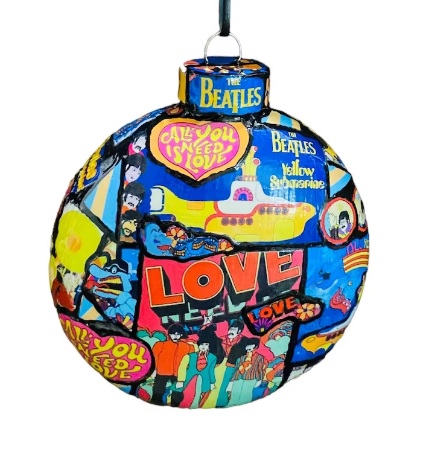

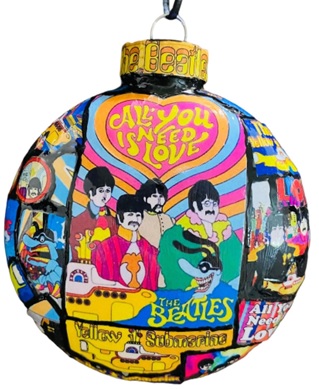

God Jul & Gott Nytt 2024 önskar
The Beatles Information Centers styrelse i form av
Artillio Bergholtz, ordförande
Torbjörn Jackson, vice ordförande
Margareta Hammar, kassör och medlemsansvarig
Birgitta Wallin, sekreterare
Anders Bergquist, ledamot






